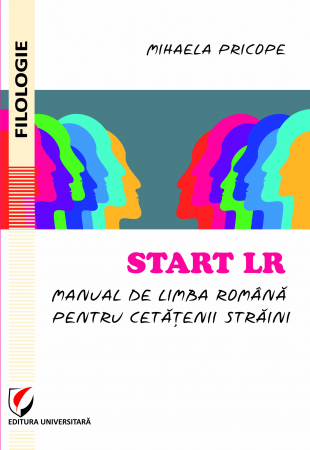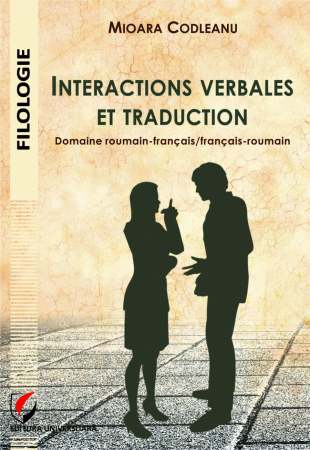Propuneri manuscrise: [email protected]: 0745 204 115
Urmărire comenzi Persoane fizice / Vânzări: 0745 200 357 / Comenzi Persoane juridice: 0721 722 783
6359.png) Communicating across Cultures. Aspects of Intercultural Business Communication - Virginia Mihaela Dumitrescu
Communicating across Cultures. Aspects of Intercultural Business Communication - Virginia Mihaela Dumitrescu
6359.png)
ISBN: 978-606-28-0743-6
DOI: 10.5682/9786062807436
Anul publicării: 2018
Ediția: I
Pagini: 234
Editura: Editura Universitară
Autor: Virginia Mihaela Dumitrescu
- Download (1)
- Autori
- Cuprins
- Cuvânt înainte
- Review-uri (0)
-
Communicating across Cultures. Aspects of Intercultural Business Communication
Descarcă
Chapter 1
CULTURE AS A SOCIAL CONSTRUCT /13
1.1 The concept of culture/ 13
1.2 Elements, dimensions, and layers of culture /16
1.3 Functions and characteristics of culture / 23
1.4 Enculturation, acculturation, transculturation/ 25
Chapter 2
COMMUNICATION WITHIN AND BETWEEN CULTURES. PRELIMINARY CONSIDERATIONS/ 29
2.1 The concept of communication/ 29
2.2 Traditions of communication theory / 29
2.3 Types of communication/ 34
2.4 Models of communication/ 36
2.4.1 The Shannon-Weaver transmission model /36
2.4.2 Roman Jakobson’s linguistic model/ 40
2.4.3 Dean Barnlund’s transactional model / 42
2.5 Intercultural communication /44
Chapter 3
MANAGING CULTURAL DIFFERENCES / 46
3.1 Cultural values/ 46
3.1.1 The Values Orientation Theory; the VOM/ 46
3.1.2 The Rokeach Value Survey (RVS) /48
3.2 Looking at other cultures: ethnocentrism, parochialism, cultural relativism / 49
3.3 Cultural diversity, cultural pluralism, multiculturalism/ 51
3.4 Culture shock /53
3.4.1 Definitions, stages, and “symptoms” / 54
3.4.2 Culture shock: a beneficial experience/ 59
3.5 Cultural awareness, sensitivity, intelligence, and competence/ 60
3.6 Fighting cultural stereotypes/ 68
Chapter 4
EDWARD T. HALL’S THEORY OF CULTURE AS COMMUNICATION/ 71
4.1 Introductory note/ 71
4.2 Main ideas / 72
4.3 Culture: a “total communication framework” /77
4.3.1 Communication across cultures/ 77
4.3.2 Time/ 85
4.3.3 Space/ 91
4.3.3.1 Interpersonal space / 95
4.3.3.2 City space /103
4.3.3.3 Office space/105
4.3.3.4 Home space/106
4.3.3.5 A final look at Hall’s theory of space / 107
4.3.4 Hall’s views on the time-space relationship/ 107
Chapter 5
GEERT HOFSTEDE’S DIMENSION PARADIGM FOR CROSSCULTURAL RESEARCH /109
5.1 Introductory note/ 109
5.2 Main ideas/110
5.3 The Hofstede model of culture/ 111
5.3.1 Power Distance (PD)/ 114
5.3.2 Individualism (IDV) /120
5.3.3 Masculinity (MAS)/ 126
5.3.4 Uncertainty Avoidance (UA) / 134
5.3.5 Long-Term Orientation (LTO)/ 141
5.3.6 Indulgence vs. Restraint (IVR)/ 151
5.4 Using Hofstede’s model of culture / 153
Chapter 6
THE TROMPENAARS MODEL OF CULTURE, AND THE RECONCILIATION OF OPPOSITES/ 155
6.1 Introductory note / 155
6.2 Main ideas/ 156
6.3 The 7-dimensional model of culture/ 159
6.3.1 Universalism vs. Particularism/ 161
6.3.2 Individualism vs. Communitarianism / 165
6.3.3 Neutral vs. Affective/ 171
6.3.4 Specific vs. Diffuse/ 175
6.3.5 Achievement vs. Ascription/ 183
6.3.6 Attitudes to time / 188
6.3.7 Attitudes to the environment/ 193
6.4 The Trompenaars model between criticism and praise /198
Chapter 7
RICHARD R. GESTELAND: PATTERNS OF BUSINESS BEHAVIOUR ACROSS CULTURES/ 200
7.1 Introductory note /200
7.2 Main ideas/ 201
7.3 Deal-Focused vs. Relationship-Focused business behavior / 202
7.4 Informal vs. Formal business behavior/ 208
7.5 Rigid-Time vs. Fluid-Time business behavior /210
7.6 Expressive vs. Reserved business behavior / 213
Chapter 8
CONCEPTUALIZATIONS OF CULTURE AND COMMUNICATION: USES AND ABUSES/ 218
8.1 A final evaluation/218
REFERENCES AND BIBLIOGRAPHY / 223
This book is based on various authors’ insights into the way culture leaves its mark on a social group’s worldview, assumptions, perceptions, attitudes, behaviour, communication, and material achievements. My approach is particularly indebted to Edward T. Hall’s anthropological thinking on culture understood as a complex, coherent collection of interrelated communication systems, and to his basic tenet that every single aspect of human life, or every type of human activity is fraught with, and conveys, culture-specific meaning. For instance, people’s use of language, body language, and paralanguage, their way of organizing space, as well as their treatment of time and relationships send subtle “messages” that need to be correctly decoded by someone from a different cultural environment – a point made (and amply demonstrated) by the American anthropologist, among others.
The book is structured around theories, models and concepts developed by authors with diverse areas of expertise (anthropologists, linguists, communication scholars, social psychologists, sociologists, international management experts, business consultants, engineers, mathematicians) who have made significant contributions to the fields of communication and cross-cultural studies. The information contained in this book is amply referenced, and illustrated by concrete examples, or supplemented by practical guidelines.
The first two chapters provide the general conceptual framework of intercultural communication, including terminological clarifications, as well as descriptions and explanations of structures, processes, functions, and theoretical perspectives necessary for the understanding of culture and communication.
Chapter III deals with cultural differences both theoretically (by integrating a few significant themes of reflection) and practically (by suggesting ways to effectively manage cultural diversity, and turn it into an asset), thus preparing the ground for the next chapters, dwelling on specific models and classifications of culture, and their relevance to various areas of social life.
Chapter IV focuses on Edward T. Hall’s landmark theory (mostly based on fieldwork) of culture and communication, or culture as communication, which in many ways has impacted a great deal of subsequent cross-cultural research up to the present day.
Chapters V, VI, and VII are dedicated to three other reputed authors and experienced intercultural consultants (Geert Hofstede, Fons Trompenaars, and Richard Gesteland) whose ideas, theories and models, accompanied by practical guidelines, cases and examples, shed light on various cultural dimensions and culture-specific patterns of thinking and behaviour, while at the same time suggesting ways to deal with, or reconcile, cultural differences, both within and outside the professional environment.
Chapter VIII is intended as a final critical evaluation of the conceptualizations and models of culture and communication across cultures dealt with in the previous chapters, and a conclusion on their proper use.
The reader is encouraged to think critically, and view all conceptualizations of culture and intercultural communication as valuable instruments as long as they are used as general guidelines rather than predictors of human behaviour.
The last section consists of an extensive Reference and Bibliography list.
Although most of the intercultural situations described in this book are taken from the business environment, they illustrate patterns of communication that may also apply elsewhere, and human relationships (e.g., superior-subordinate/ male-female/ buyer-seller/ employer-employee) that may be invested with paradigmatic value.
The book can therefore benefit very diverse categories of readers, preparing them to behave adequately in intercultural situations, to avoid blunders and communication breakdown, to minimize culture shock, to deal with cultural differences at both the individual and the institutional level.
Since it is largely based on the author’s experience of teaching an Intercultural Business Communication course, it is particularly useful to students of economics and business people, providing them with a solid foundation for developing their intercultural competencies as indispensable components of their professional training and expertise. However, other professionals, as well as anyone travelling abroad or coming into contact with people and cultural products from other parts of the world – which practically includes everyone nowadays – may also use it as a guide to developing a global mindset as a defence against intolerance, arrowmindedness, ethnocentrism, parochialism, and xenophobia. Language teachers and learners may look at it as a constant reminder that secondlanguage education should always be viewed as a convergence of two factors: language and culture.
Last but not least, by emphasizing the importance of values, the central components of culture underlying people’s thinking and behavioural patterns, and by providing examples of other cultures’ ways of perceiving, understanding, and “doing things”, the book will hopefully stimulate readers to take a closer look at their own culture, reflect critically on its core values, and gain new insights into their cultural identity, which they usually take for granted. THE AUTHOR

![Communicating across Cultures. Aspects of Intercultural Business Communication - Virginia Mihaela Dumitrescu [1] Communicating across Cultures. Aspects of Intercultural Business Communication - Virginia Mihaela Dumitrescu [1]](https://gomagcdn.ro/domains/editurauniversitara.ro/files/product/large/communicating-across-cultures-aspects-of-intercultural-business-communication-292-2616.jpg)














